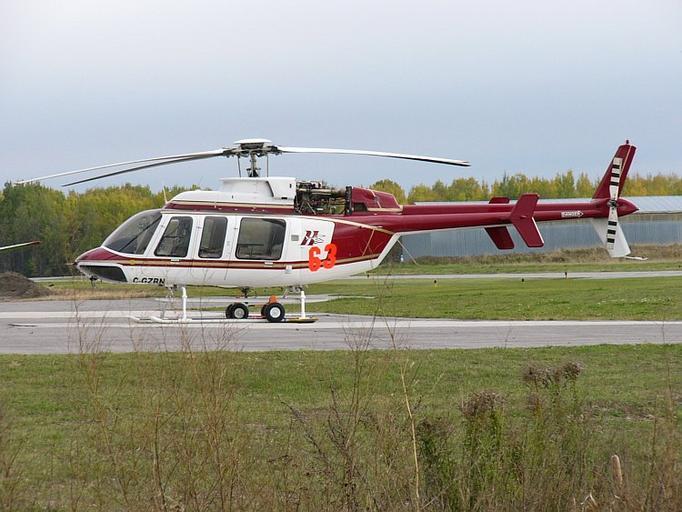When it comes to aviation marvels, helicopters stand out as some of the most versatile flying machines. Whether it’s search and rescue, medical evacuation, law enforcement, or private transport, helicopters like the Bell 407 deliver a combination of precision and power. In this guide, inspired by Jake O’Neal’s detailed explanation on Animagraffs, we’ll dive into how the Bell 407 works, focusing on its components, flight mechanics, and capabilities.
Here’s an amazing 3D animated explainer video by Animagraffs
The Basics of Helicopter Flight
At its core, a helicopter’s unique capability lies in its rotating blades. Unlike airplanes that rely on forward movement to generate lift, helicopters use their main rotor to produce lift while stationary. This spinning “wing” is counterbalanced by the tail rotor, which prevents the helicopter from spinning uncontrollably due to torque.
The Bell 407 is powered by a turboshaft engine—a type of engine similar to a jet engine but optimized to drive a shaft rather than produce thrust. Its engine, lightweight airframe, and advanced rotor systems come together to create a reliable, high-performance aircraft.
Anatomy of the Bell 407
Here’s a quick overview of the Bell 407’s main components:

- Airframe:
- Made from lightweight aluminum and composite materials, it balances strength and flexibility.
- Includes a tail boom for stabilizing flight and housing the tail rotor drive system.
- Engine:
- A single turboshaft engine generates over 650 horsepower, converting fuel into rotational energy.
- Combines compressors, combustion chambers, and turbines to supply power efficiently.
- Main Rotor:
- A four-blade rotor system with advanced aerodynamics that enables precise lift and directional control.
- Blades are constructed with fiberglass and reinforced with honeycomb structures for strength and weight savings.
- Tail Rotor:
- Counteracts the torque from the main rotor and enables directional control.
- Uses flapping and pitch adjustments to adapt to airflow differences between advancing and retreating blades.
- Cockpit:
- Equipped with large windows for maximum visibility.
- Features advanced digital displays, including a Primary Flight Display (PFD) and Multi-Function Display (MFD) for monitoring engine performance, flight data, and navigation.
Allison 250 Engine Cutaway
Flight Mechanics
1. Collective and Cyclic Pitch Control
- The collective control adjusts the angle of all rotor blades simultaneously to increase or decrease lift, allowing the helicopter to climb or descend.
- The cyclic control tilts the rotor disc in a specific direction, enabling forward, backward, or lateral flight.
2. Autorotation
- In the event of engine failure, helicopters can use autorotation to safely land. By angling the blades to generate lift as they descend, pilots can manage a controlled glide to the ground.
3. Power Transmission
- Power from the engine is transferred through a series of gearboxes and driveshafts, reducing rotational speeds to manageable levels for the rotors. A freewheeling unit ensures that the rotors can spin independently of the engine during autorotation.
Performance and Specifications
The Bell 407 is a workhorse in the helicopter world, boasting impressive specs:
- Empty Weight: 2,700 lbs (1,225 kg)
- Max Payload: 2,300+ lbs (1,043+ kg)
- Cruise Speed: 135 mph (217 km/h)
- Flight Range: 400 miles (644 km)
- Service Ceiling: 20,000 feet (6,100 m)
These capabilities make it ideal for missions requiring speed, agility, and dependability.
Advanced Rotor Design
The Bell 407’s main rotor system is a masterpiece of engineering. Each blade adjusts dynamically through lead/lag dampers, elastomeric bearings, and pitch links, allowing it to adapt to flight conditions in real time. The swashplate assembly—a pivotal component—translates pilot inputs into blade pitch adjustments, seamlessly blending collective and cyclic movements.
In the Pilot’s Seat

The cockpit of the Bell 407 is designed for both functionality and ease of use. Modern digital displays provide pilots with critical flight information at a glance, including:
- Attitude Indicator: Monitors pitch and roll.
- Airspeed and Altimeter: Tracks speed and altitude.
- Power Situation Indicator (PSI): Shows engine torque, temperature, and RPM.
The pilot uses the cyclic stick for directional control, the collective lever for lift, and foot pedals for tail rotor adjustments.
Why the Bell 407 Stands Out
The Bell 407 combines advanced engineering, user-friendly controls, and robust performance, making it a popular choice for a wide range of operations. Its lightweight yet durable design, efficient engine, and high-tech rotor systems ensure safety and precision in demanding conditions.

Understanding how a helicopter like the Bell 407 works gives us an appreciation for the ingenuity behind rotorcraft design. From the main rotor’s flapping blades to the carefully balanced drivetrain, every detail is a testament to engineering excellence. Whether you’re a pilot, an enthusiast, or just curious about aviation, the Bell 407 is a remarkable example of what helicopters can achieve.



